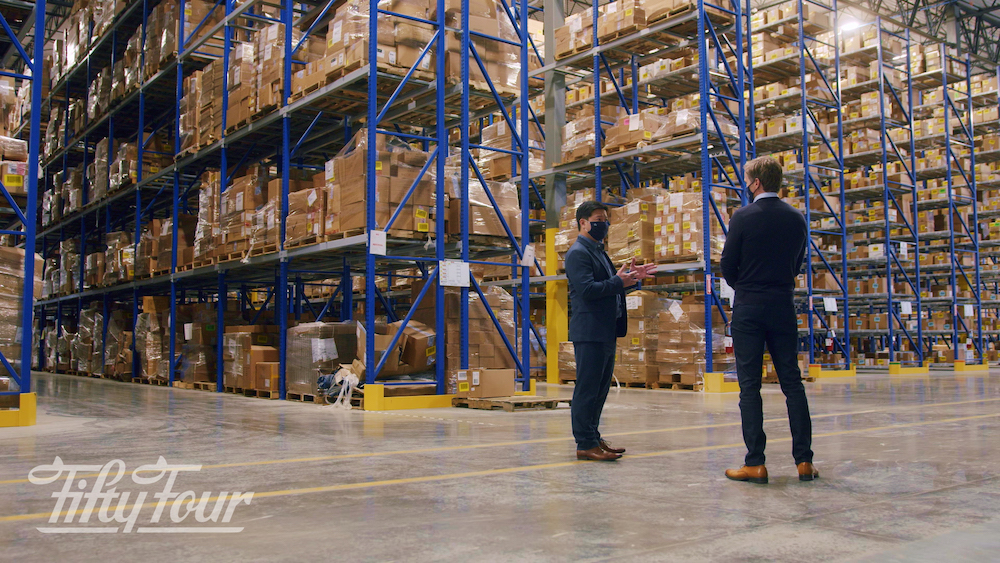
If you are scrolling through websites and trying to figure out which warehouse management system is the best for your application, you may be getting tangled up in all the details and promises that each company declares when you click on its site. Deciding which warehouse management system will be best for you takes some deep exploration into your specific and unique challenges.
Material handling and distribution center warehouses have come a long way from the days when the Warehouse Management System (WMS) was a dedicated long-term employee for each section who knew that part of the operation inside and out. You might have had a guy who managed your material handling forklifts and fleet section. That person kept track of where each piece was and also the maintenance schedule on a clipboard. Another person managed the shipping and receiving, ensuring that every piece that came in was logged and stored correctly and every piece that went out was deducted from the inventory. Back then, things didn’t come back like they do today, so the returns function probably looked like, eh, this piece came back, I’ll put it over here for now. If anybody got sick or took vacation, the work of the warehouse moved from a fairly good clip to a slow crawl.
Inventory was a monstrous beast that came around every year, took a minimum of two weeks and sent proud men scurrying for cover. It was all hands on deck – heck, people weren’t allowed to take vacation during inventory.
Since all of this work and movement involved humans, human error was pronounced. Product was stocked incorrectly, handled roughly and allowed to expire. Material handling equipment missed its regular maintenance and died on the job. When a major player was absent, people wondered around with no direction. But things have changed. And there are plenty of reasons for that change, including:
- A lack of a skilled workforce. Or, in actuality, no real workforce at all. All those guys who knew your operation inside and out have long since retired.
- E-commerce. There’s no reason to explain this. If you aren’t caught up in the e-commerce boom, then you aren’t competing.
- Smart everything. Everything is “smart” these days. Unless you are hanging on to a dinosaur, your equipment may be smarter than you if you haven’t kept up.
- Technology. The material handling and DC warehouse world has changed and you’ll need to change as well, if you want to keep up.
Hopefully, your warehouse operation doesn’t look like the one described above. Maybe you’ve moved slowly into trying new technology and innovation in baby steps. Perhaps you’ve got a hybrid of the old and new going on and you are looking at upgrading. Figuring out what will fit you and your company can be a chore. Let’s look at some of today’s WMS features and see if anything sticks.
Today’s Warehouse Management Systems
No longer reliant on human power to run the engine, a good WMS runs the warehouse and all of its components while the human labor is reserved for higher decision making tasks and setting and accomplishing long- and short-term strategic goals for growth. Today’s WMS’s are fully able to integrate across multiple warehouse functions so that the logistical flow of information and material goods is optimized. And, a good WMS even has the capacity to “think,” so it can predict upcoming resource shortfalls and alert the management team in advance, plus other handy qualities to make your job easier.
Here is an example of some WMS capabilities:
- Inventory control – obviously a big one for any material handling and DC warehouse. Instead of that once a year monstrous task, you’ll now have access to your exact inventory 365/24/7.
- Material Requirements Planning – specifically for manufacturers. Never run out of a crucial component of your manufacturing process again.
- Shop Floor Control – your WMS software takes the place of the guy standing above the floor making sure everybody is doing what they should be doing to keep the flow moving smoothly.
- Automated Ordering – Reduce fraud, and save money and time by having your system send orders for approval, place the orders with the vendors and keep track of when it’s time to order again.
- Fleet Management – Integrate your material handling fleet and forklifts into your WMS so you’ll always know where your equipment is, if it’s being used at its highest level and when its time to schedule maintenance – or let your system schedule the maintenance for you!
- E-Commerce – There are WMS’s specifically designed to handle the busy pace of e-commerce. These systems can incorporate Yard Management Systems to help synchronize what’s happening outside in the yard with what’s happening inside for better time management, as well as EDI and ERP for front and back end order management and fulfillment.
By now, you might be asking: How have I managed to work without incorporating all these innovations in the material handling and DC warehouse arena? One thing to consider: You may have been getting by without taking advantage of today’s technology, but have you missed taking your operation to the next level by not exploring what’s out there?

The Best Warehouse Management System
Back to the original question. What is the best management system out there? Do I need to spend a fortune to buy into the next big thing? And the answers:
- The best warehouse management system is the one that takes on your specific and unique challenges and offers a customized solution that fits your budget.
- See #1
We know you have a demanding and fast-paced material handling and DC warehouse operation going on. It’s hard to catch your breath, much less think about integrating a whole new system into your application. At 54 Intralogistics, we have a large team of skilled professionals situated all over the country who specialize in finding what we call your MaxOP – the maximum operating potential of your warehouse. You can take the first step by filling out a simple form asking for a fast and free consultation. If you need help figuring out your best next move, get some help from the professionals in warehouse management.
